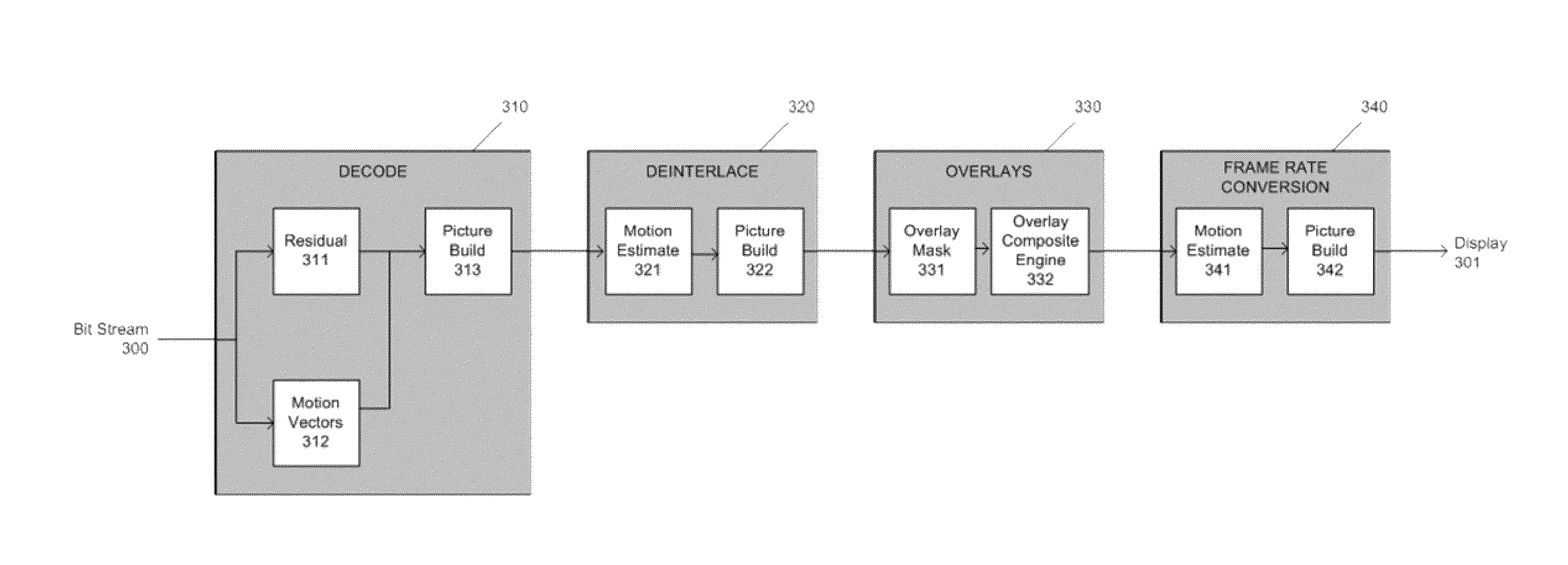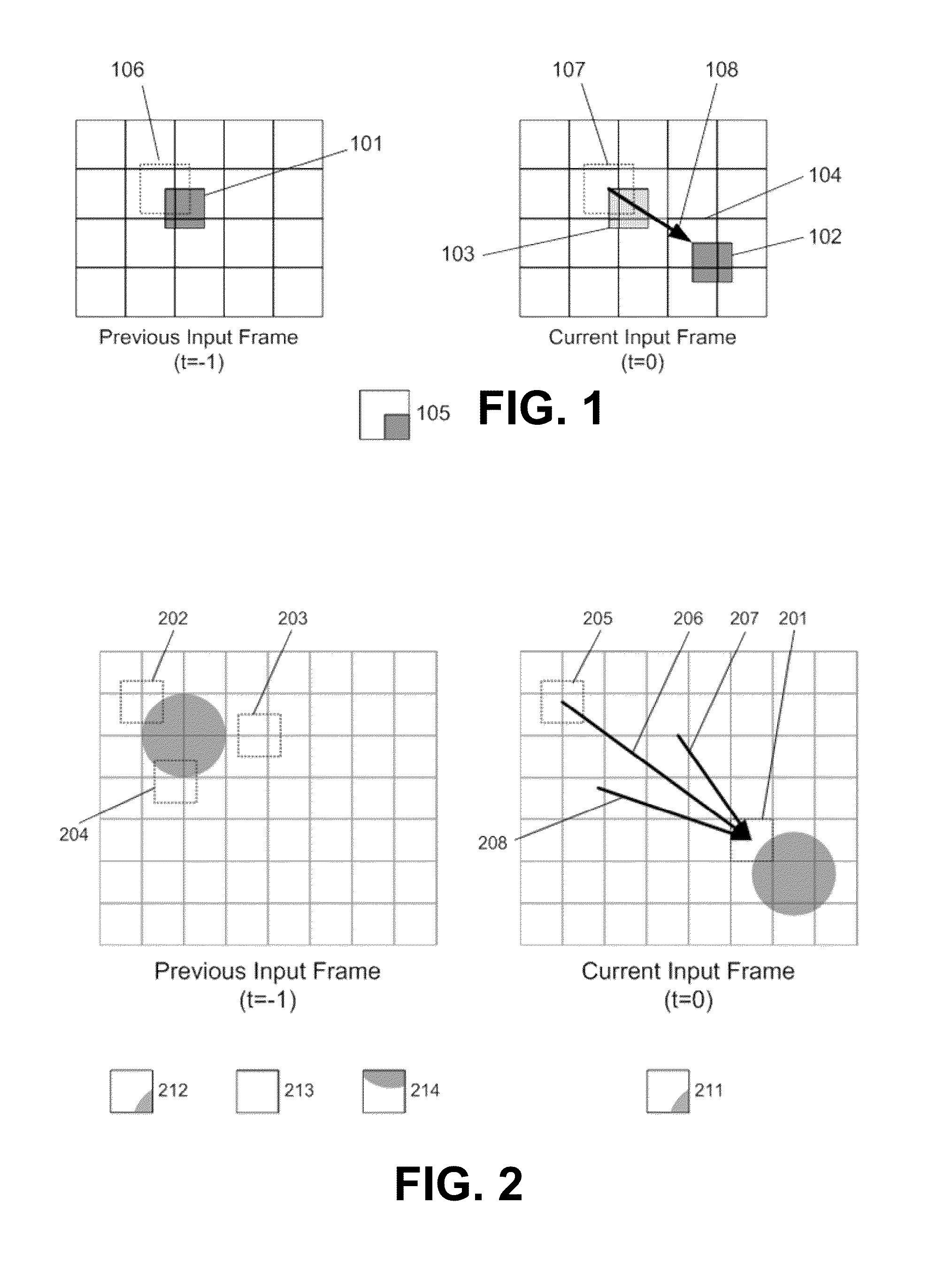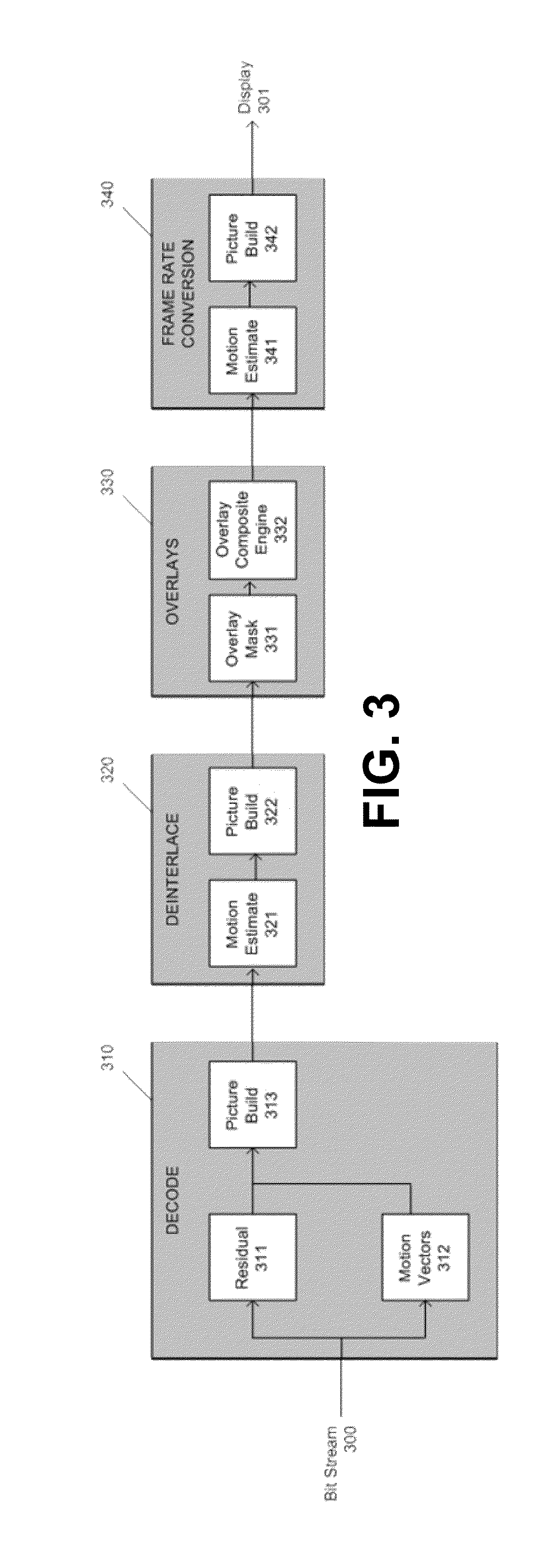External vectors in a motion estimation system
- Summary
- Abstract
- Description
- Claims
- Application Information
AI Technical Summary
Benefits of technology
Problems solved by technology
Method used
Image
Examples
Embodiment Construction
[0036]The disclosed examples are in the context of a motion estimation system operating on a non-interlaced, or progressive, video signal, in which the video comprises a series of full frames of data. Motion estimation is also commonly performed on interlaced video where the video comprises a series of fields. The disclosed aspects, examples, and principles are equally applicable to motion estimators operating on both non-interlaced and interlaced video. Accordingly, the term “field or frame” or “video field or frame” covers motion estimation on both an interlaced and a non-interlaced video signal. If the term “frame” is used, it should be interpreted as “field or frame”, that is to say, to cover both motion estimation performed on a non-interlaced video signal and an interlaced video signal.
[0037]The terms “current”, “previous” and “following” are relative terms used simply to indicate the sequential order of frames or fields in the video signal. A “previous” field or frame can be ...
PUM
 Login to View More
Login to View More Abstract
Description
Claims
Application Information
 Login to View More
Login to View More - R&D
- Intellectual Property
- Life Sciences
- Materials
- Tech Scout
- Unparalleled Data Quality
- Higher Quality Content
- 60% Fewer Hallucinations
Browse by: Latest US Patents, China's latest patents, Technical Efficacy Thesaurus, Application Domain, Technology Topic, Popular Technical Reports.
© 2025 PatSnap. All rights reserved.Legal|Privacy policy|Modern Slavery Act Transparency Statement|Sitemap|About US| Contact US: help@patsnap.com



